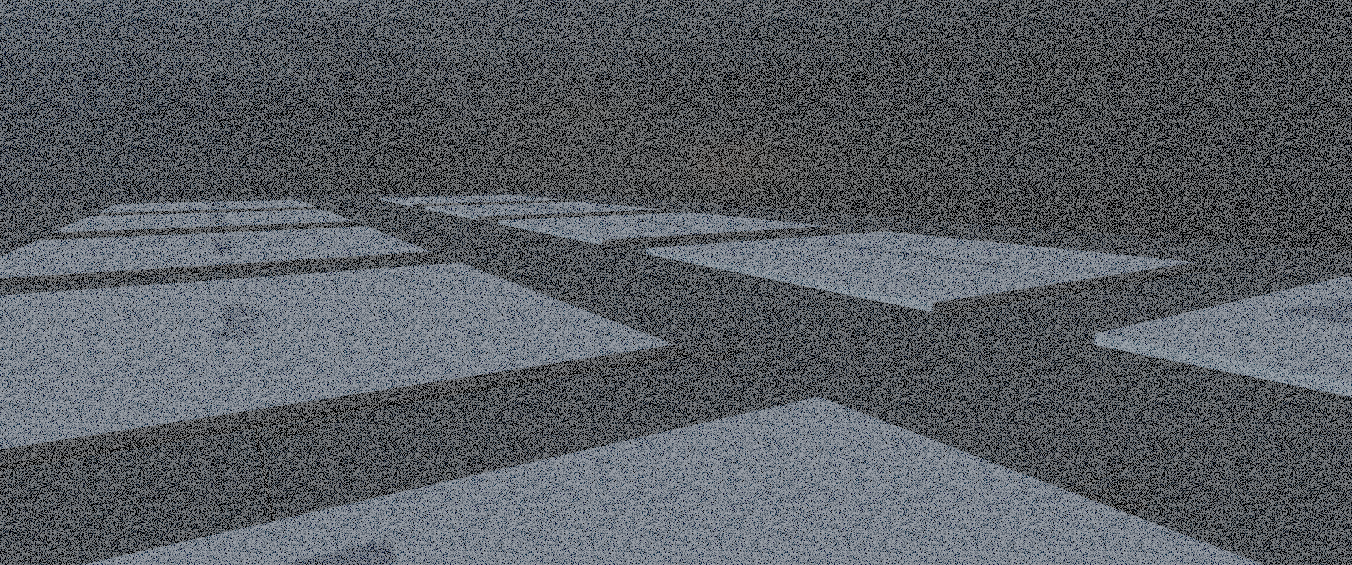FilmGrain
The FilmGrain component adds simulated film-style grain to the camera output. It's purely visual – it does not affect gameplay or lighting – and is intended to add texture, grit or stylistic noise to the final image.
| Property | Description |
|---|---|
| Intensity | Overall visibility of the grain. 0 = off, 1 = heavy. |
| Response | How much the grain reacts to brightness. Higher values = less grain in darker areas. |
Source
namespace Sandbox;
/// <summary>
/// Applies a film grain effect to the camera
/// </summary>
[Title( "FilmGrain" )]
[Category( "Post Processing" )]
[Icon( "grain" )]
public sealed class FilmGrain : BasePostProcess<FilmGrain>
{
[Range( 0, 1 )]
[Property] public float Intensity { get; set; } = 0.1f;
[Range( 0, 1 )]
[Property] public float Response { get; set; } = 0.5f;
public override void Render()
{
float intensity = GetWeighted( x => x.Intensity );
if ( intensity.AlmostEqual( 0.0f ) ) return;
float response = GetWeighted( x => x.Response, 1 );
Attributes.Set( "intensity", intensity );
Attributes.Set( "response", GetWeighted( x => x.Response, 1 ) );
var shader = Material.FromShader( "shaders/postprocess/pp_filmgrain.shader" );
var blit = BlitMode.WithBackbuffer( shader, Stage.AfterPostProcess, 200, false );
Blit( blit, "FilmGrain" );
}
}
HEADER
{
DevShader = true;
}
MODES
{
Default();
Forward();
}
COMMON
{
#include "postprocess/shared.hlsl"
}
struct VertexInput
{
float3 vPositionOs : POSITION < Semantic( PosXyz ); >;
float2 vTexCoord : TEXCOORD0 < Semantic( LowPrecisionUv ); >;
};
struct PixelInput
{
float2 uv : TEXCOORD0;
// VS only
#if ( PROGRAM == VFX_PROGRAM_VS )
float4 vPositionPs : SV_Position;
#endif
// PS only
#if ( ( PROGRAM == VFX_PROGRAM_PS ) )
float4 vPositionSs : SV_Position;
#endif
};
VS
{
PixelInput MainVs( VertexInput i )
{
PixelInput o;
o.vPositionPs = float4(i.vPositionOs.xy, 0.0f, 1.0f);
o.uv = i.vTexCoord;
return o;
}
}
PS
{
#include "postprocess/common.hlsl"
#include "postprocess/functions.hlsl"
#include "procedural.hlsl"
#include "common/classes/Depth.hlsl"
Texture2D g_tColorBuffer < Attribute( "ColorBuffer" ); SrgbRead( true ); >;
float grainIntensity< Attribute("intensity"); >;
float grainResponse< Attribute("response"); >;
Texture2D g_tBlueNoise < Attribute( "BlueNoise" ); >;
float3 FilmGrain( float3 vColor, float3 flSampledGrain, float intensity, float flResponse )
{
// Remap grain to a -1 -> 1 range
flSampledGrain.rgb = flSampledGrain.b;
// Grab our luminence and rescale based on response
float lum = 1 - (GetLuminance( vColor.rgb ) * 5.0f);
intensity *= saturate( lerp( 1.0f, saturate( lum ), flResponse ) );
float3 fullGrain = saturate( (flSampledGrain - 0.1) * 2 ) - 0.7;
vColor = lerp( vColor, GetLuminance( vColor.rgb ) * 0.1, intensity );
return lerp( vColor, fullGrain, intensity );
}
float4 MainPs( PixelInput i ) : SV_Target0
{
float2 vScreenUv = CalculateViewportUv( i.vPositionSs.xy );
float4 color = g_tColorBuffer.SampleLevel( g_sBilinearMirror, vScreenUv, 0 );
float2 scale = float2( g_vRenderTargetSize.x , g_vRenderTargetSize.y ) / 128;
float2 vGrainUvs = TileAndOffsetUv( vScreenUv, scale, float2(frac(g_flTime * 4.042f), frac(g_flTime * 34.054f)) );
float3 flGrain = g_tBlueNoise.SampleLevel( g_sBilinearWrap, vGrainUvs, 0 ).rgb;
flGrain += g_tBlueNoise.SampleLevel( g_sBilinearWrap, -vGrainUvs * 5, 0 ).brg;
flGrain *= 0.5;
color.rgb = FilmGrain( color.rgb, flGrain, grainIntensity, grainResponse );
return color;
}
}
Created 2 Oct 2025
Updated 2 Oct 2025
